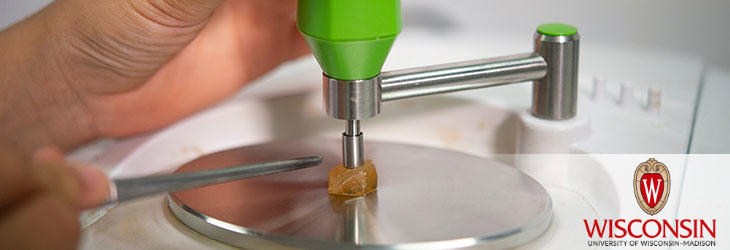Research Tools

Improved Disulfide-Bond Reducing Agents
WARF: P110330US02
Inventors: Ronald Raines, John Lukesh
The Wisconsin Alumni Research Foundation (WARF) is seeking commercial partners interested in developing a reducing agent for disulfide bonds that outperforms DTT or any other known dithiol.
Overview
Disulfide bonds between cysteine residues are the most common crosslinking agents in proteins. Reducing these bonds is an ordinary procedure in biochemistry and biotechnology. The most commonly used reducing agent is dithiothreitol (DTT or ‘Cleland’s Reagent’).
Despite its high cost, DTT is potent and remains the standard reagent for reducing disulfide bonds in biomolecules. At physiological pH levels, however, DTT becomes sluggish and unreactive. There remains a need for new and cheaper reducing agents that can be utilized in biological systems.
Despite its high cost, DTT is potent and remains the standard reagent for reducing disulfide bonds in biomolecules. At physiological pH levels, however, DTT becomes sluggish and unreactive. There remains a need for new and cheaper reducing agents that can be utilized in biological systems.
The Invention
UW–Madison researchers have developed dithioamine reducing agents that can be prepared from inexpensive starting materials. The new reagent, dithiobutylamine (DTBA), is synthesized from the common amino acid, aspartic acid, by a short and simple route.
Applications
- Research and synthetic reagents
- Reducing or preventing the formation of disulfide bonds
- Regulating the function of proteins with sulfhydryl group-associated activity
- Enhancing the activity/preventing inactivation of biomolecules in vivo or in vitro
Key Benefits
- Superior performance
- Lower thiol pKa than DTT
- Faster reduction time
- Can be prepared in high yield from cheaper starting materials
Stage of Development
The researchers have synthesized DTBA from aspartic acid with 54 percent overall yield. A second method requires an additional step but avoids the use of triphenylphosphine (PPh3) and is more amenable to large-scale process chemistry.
Tech Fields
For current licensing status, please contact Jennifer Gottwald at [javascript protected email address] or 608-960-9854